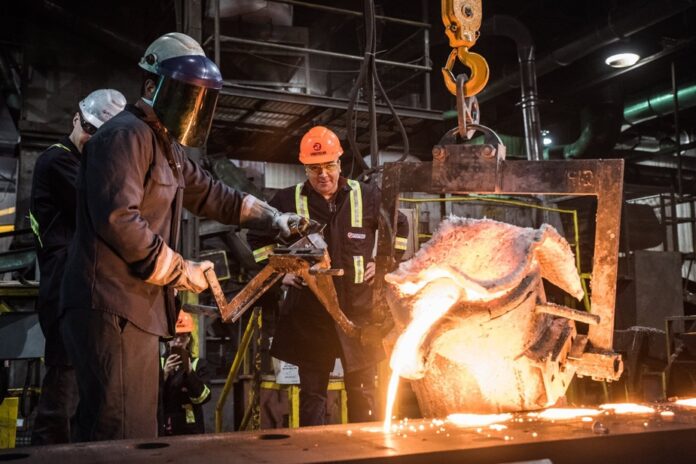Innovation can increase productivity and help conquer new markets. It can also prove to be a major argument when attracting workers, retaining them and helping them develop within the company. This is particularly true in the regional manufacturing sector. Overview.
Innovation may once have been seen as a way to reduce the number of workers, payroll and increase company productivity. But with the labor shortage, companies increasingly have to reconcile the search for performance, productivity and attractiveness of the workforce.
At Fonderie Poitras, innovation and workforce attraction go hand in hand. The 150-employee company located in L’Islet, in Chaudière-Appalaches, must be both competitive in a very competitive market and able to attract and retain the staff it needs to take on its international rivals.
In this high-volume industry, quality objectives are high, which requires the use of numerous technologies. The finishing of the parts, formerly done by hand, is now carried out by five robotic cells. Cameras and lasers have replaced human visual inspection to inspect parts. “All the technologies that have been added have not taken away jobs,” specifies Jean-Philippe Thibaudeau, director of operations. On the contrary, “as a business located in the region, having a workforce is a challenge. We have made several missions abroad to recruit.”
From this point of view, Fonderie Poitras relies on its innovations to change the image of foundry work. “You might think it’s noisy and dusty, but it’s not that anymore,” emphasizes Jean-Philippe Thibaudeau. The company organizes visits for potential recruits. “At the end of the visit, people are often surprised by the level of technology,” he emphasizes.
The company is currently working on a project to implement a robot equipped with a vision system, capable of fetching six-pound parts that are tangled in a basket. This project would free up a position and develop an employee internally so that he brings greater added value, while reducing the physical load of his work.
This simultaneous search for productivity and attraction of the workforce through innovation is not an exception. Innovation efforts increase productivity for 68% of business leaders and attract labor for 65% of them, making them the two main impacts of innovation in Quebec businesses, indicates the Innovation Barometer, a survey conducted by the Quebec Innovation Council last January.
“Innovations make it possible to replace or fill vacant positions with robotization, allowing the company to continue producing,” explains Loïck-Alexandre Gautier, senior director of the Innovation Institute at the Innovation Council . “The integration of new technologies also makes it easier to recruit. »
Moreover, to innovate, you still need to have the qualified workforce that allows you to do so, points out Mr. Gautier. The main obstacle to the development of innovations in Quebec companies is precisely the availability of qualified labor: three out of ten business leaders (31%) cite this issue, indicates the Innovation Barometer. One in two companies is even faced with this obstacle in companies with 250 or more employees.
Innovation is a pragmatic response to the issue of staff shortages, says Laurent Simon, director of the entrepreneurship and innovation department at HEC Montréal. “The labor shortage forces us to innovate, because we are forced to think differently about what we were doing without thinking too much before,” he explains.
New entrants to the labor market are helping to accentuate this trend. “It is clear that we have a generation that will find work more stimulating, if it includes a dimension of innovation, reflection, improvement, but also limitation of environmental and social impacts. These factors can attract people! », underlines Laurent Simon.
However, organizations should be careful not to present themselves as innovative if this is not the case. “The big trap would be to talk about innovation in a generic way,” warns Mr. Simon. It’s not just a matter of declaring that we are innovative. Innovation is not the outcome of an approach, it is the approach itself. »
And the backlash could be severe for an organization that calls itself innovative. “Employees are not naive,” warns Laurent Simon. In a job market where employees hold the big end of the stick, they go to the organizations that prove to be the most authentic. »















